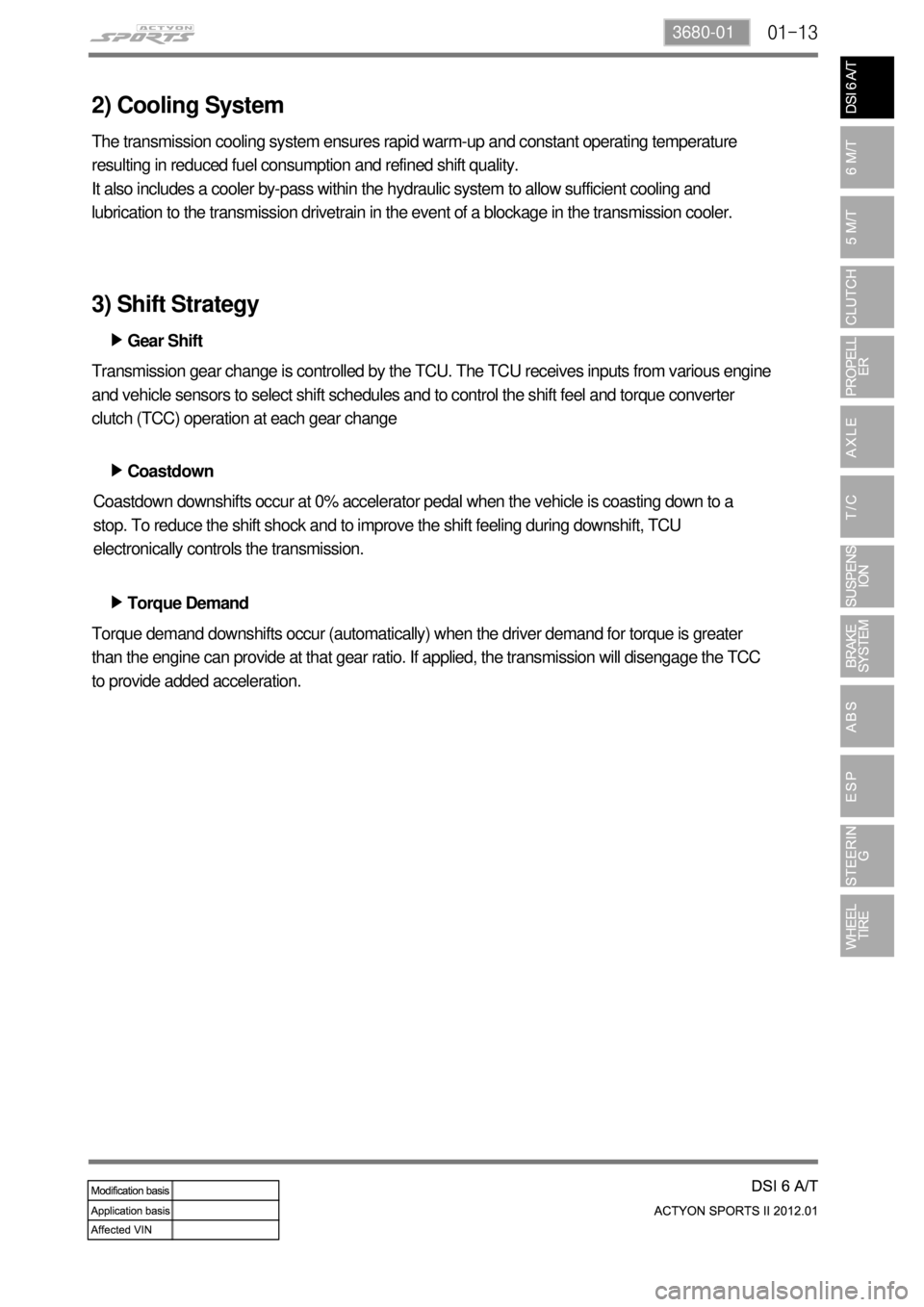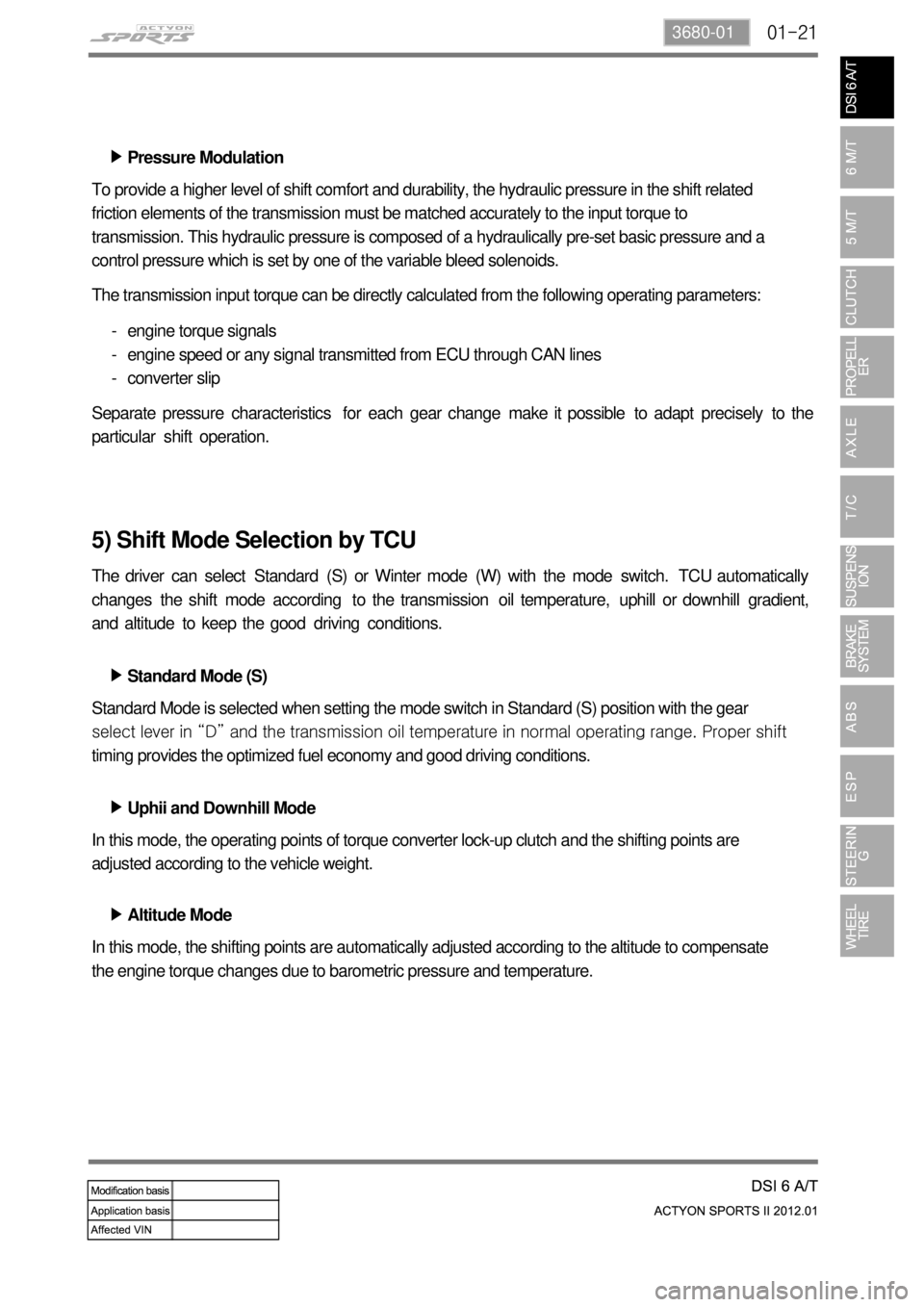Page 518 of 828

06-4
1. OVERVIEW
TRIP/RESET Switch
The mode is changed each time this button is
pressed as follows: TRIP A -> TRIP B -> DTE ->
Driving time -> Average fuel economy -> Instant
fuel consumption -> Tail lamp illumination level.Windshield de-icer switch
Pressing switch activates
windshield heated glass for
approx. 12 minutes
The main switch which allows the
driver to control all door windows,
door lock and window lock from
the driver seat. Tailgate and outside
rearview mirror heated
glass switch
Pressing switch
activates tailgate and
outside rearview mirror
heated glass for
approx. 12 minutes
Driver power window switchESP ON/OFF switch
Pressing this switch deactivates the ESP
(Electronic Stability Program) system and
turns on the ESP OFF indicator on the
instrument cluster. Pressing this switch
again turns off the ESP OFF indicator and
activates the ESP system.
Outside rearview mirror folding/unfolding
switch
Press the FOLD/UNFOLD switch to fold
the outside rearview mirror and press the
switch again to unfold the mirror.
Page 556 of 828

01-12
2. FEATURES
Early Downshifts with Hard Braking and Skip Shifts ▶
When heavy braking is detected, the transmission downshifts early and skips gears to provide
increased engine braking to provide gear selection for tip-in.
Gear Hold on Uphill/Downhill ▶
If the accelerator pedal is released when travelling uphill, upshifts are prevented to reduce
busyness on grades. If the accelerator pedal is released when travelling downhill, upshifts are
prevented to enhance engine braking.
Soft Engagement when Shifting to “D” and “R” Position ▶
A soft engagement feature avoids harsh take up of drive when selecting Drive or Reverse. This is
achieved by limiting engine speed and engine torque which results in a rapid, but progressive
engagement of either Drive or Reverse when moving from the Park or Neutral positions. There is
no drive engagement prevention strategy implemented on the transmission system as there is
sufficient engine strategy to protect the system. However, reverse gear engagement is prevented
until engine speed is less than 1400 rpm and the accelerator pedal position is less than 12% and
vehicle speed is less than 10 km/h.
Converter Clutch Lock-Up In All Gears ▶
The transmission features converter clutch lock-up in all gears. This feature provides improved
fuel economy and vehicle performance. It also improves transmission cooling efficiency when
towing heavy loads at low speeds, e.g. in city driving or hill terrain.
Embeded Memory Module (EMM) ▶
The embedded memory module (EMM) is
matched to the transmission's valve bodies
during transmission assembly to ensure
refined shift quality. The EMM is integrated
into the input speed sensor which is mounted
on the valve body in the transmission. The
EMM is used to store data such as valve body
calibration data and valve body serial number.
Upon installation, the TCU will download the
data from the EMM and utilise this data in the
operation of the transmission.
1) Features
Page 557 of 828

01-133680-01
2) Cooling System
The transmission cooling system ensures rapid warm-up and constant operating temperature
resulting in reduced fuel consumption and refined shift quality.
It also includes a cooler by-pass within the hydraulic system to allow sufficient cooling and
lubrication to the transmission drivetrain in the event of a blockage in the transmission cooler.
Gear Shift ▶
Coastdown ▶
Torque Demand ▶ Transmission gear change is controlled by the TCU. The TCU receives inputs from various engine
and vehicle sensors to select shift schedules and to control the shift feel and torque converter
clutch (TCC) operation at each gear change
Coastdown downshifts occur at 0% accelerator pedal when the vehicle is coasting down to a
stop. To reduce the shift shock and to improve the shift feeling during downshift, TCU
electronically controls the transmission.
Torque demand downshifts occur (automatically) when the driver demand for torque is greater
than the engine can provide at that gear ratio. If applied, the transmission will disengage the TCC
to provide added acceleration.
3) Shift Strategy
Page 565 of 828

01-213680-01
Pressure Modulation ▶
To provide a higher level of shift comfort and durability, the hydraulic pressure in the shift related
friction elements of the transmission must be matched accurately to the input torque to
transmission. This hydraulic pressure is composed of a hydraulically pre-set basic pressure and a
control pressure which is set by one of the variable bleed solenoids.
The transmission input torque can be directly calculated from the following operating parameters:
engine torque signals
engine speed or any signal transmitted from ECU through CAN lines
converter slip -
-
-
Separate pressure characteristics for each gear change make it possible to adapt precisely to the
particular shift operation.
5) Shift Mode Selection by TCU
The driver can select Standard (S) or Winter mode (W) with the mode switch. TCU automatically
changes the shift mode according to the transmission oil temperature, uphill or downhill gradient,
and altitude to keep the good driving conditions.
Standard Mode (S) ▶
Uphii and Downhill Mode ▶
Altitude Mode ▶ Standard Mode is selected when setting the mode switch in Standard (S) position with the gear
<009a008c0093008c008a009b00470093008c009d008c0099004700900095004702c8006b02c9004700880095008b0047009b008f008c0047009b009900880095009a00940090009a009a00900096009500470096009000930047009b008c00940097008c00
990088009b009c0099008c0047009000950047009500960099>mal operating range. Proper shift
timing provides the optimized fuel economy and good driving conditions.
In this mode, the operating points of torque converter lock-up clutch and the shifting points are
adjusted according to the vehicle weight.
In this mode, the shifting points are automatically adjusted according to the altitude to compensate
the engine torque changes due to barometric pressure and temperature.
Page 623 of 828
04-8
3. DUAL MASS FLYWHEEL (DMF)
The dual mass flywheel (DMF) is of having a mass divided into two halves.
While one mass is connected to the engine crankshaft, which is affected by the mass moment of
inertia of the engine, the other mass is affected by one of the transmission.
The divided dual masses are connected to the coil spring and damping system internally.
The DMF has the following benefits: ▶
Reducing fuel consumption by lowering engine speed
Reducing rattling noise and vehicle vibration in all driving ranges
Reducing synchronization wear
Facilitating gear change
Protecting power train parts by preventing excessive load from being delivered -
-
-
-
-
Primary flywheel
Secondary flywheel
Arc damper spring
Torque limiter
Ring gear 1.
2.
3.
4.
5.
Page 749 of 828
13-8
Measure the dial runout and lateral
runout on both the inboard and
outboard rim flanges. - Tire inflation pressure -
Check the tire inflation pressure by
inspecting the tread width. -
Specified value 2.66 mm
Wheel runout
If wheel runout or tire runout is excessive,
it could result in abnormal wear of the tire.
Measure the runout with a dial gauge. 4.
Measure free radial runout on the tire
tread. -
Specified value 2.03 mm
If any measurement exceeds the above
specifications, replace the applicable
tires or wheels -Tire inflation pressure 3.
Specified value 32 psi
Maintaining the specified tire ressure is
essential for comfortable riding, driving
safety, and long tire life. Incorrect inflation
pressures will increase tire wear and will
impair safety, vehicle handling,
comfortable driving and fuel economy.
Always make sure that the tire inflation
pressure is correct.
Proper
inflationProper
inflationOver
inflation
Tread width Tread width Tread width